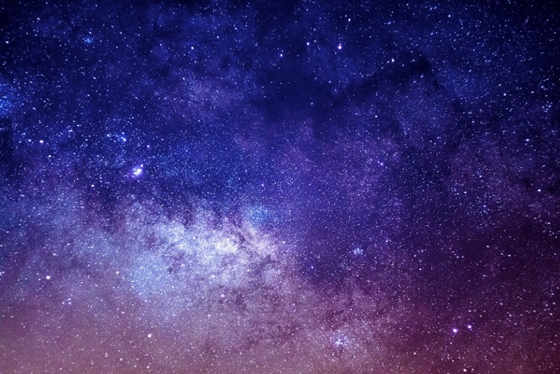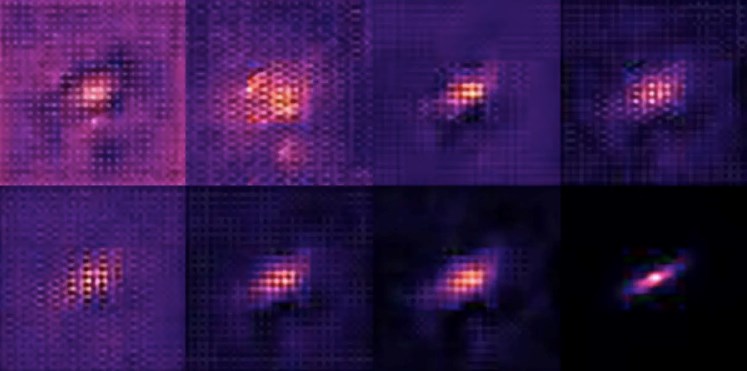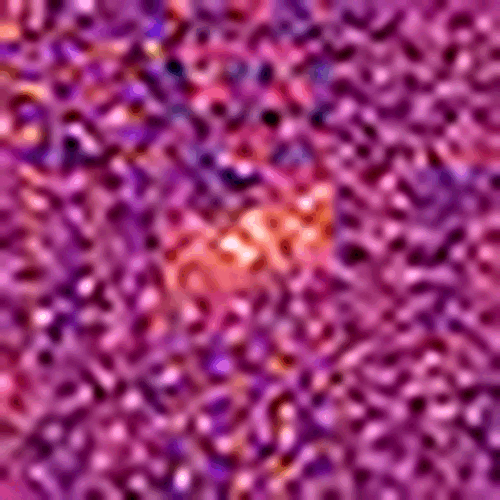[{“available”:true,”c_guid”:”604c6789-8e44-4594-b6c1-986adf68a382″,”c_author”:”hvg.hu”,”category”:”tudomany”,”description”:”A hívások rögzítésére, fotózásra és a telefon átkutatására is használni lehet azt a kémszoftvert, melyet az izraeli QuaDream fejleszt. és ami Magyarországon is működtet szervereket. A programmal újságírókat, ellenzéki politikusokat és civil aktivistákat figyeltek meg világszerte kormányzati körök.”,”shortLead”:”A hívások rögzítésére, fotózásra és a telefon átkutatására is használni lehet azt a kémszoftvert, melyet az izraeli…”,”id”:”20230412_quadream_kemkedes_kemszoftver_megfigyeles_lehallgatas_kingspawn_endofdays”,”image”:”https://api.hvg.hu/Img/ffdb5e3a-e632-4abc-b367-3d9b3bb5573b/604c6789-8e44-4594-b6c1-986adf68a382.jpg”,”index”:0,”item”:”f0af4bc4-3597-4610-81df-e7578b2f2891″,”keywords”:null,”link”:”/tudomany/20230412_quadream_kemkedes_kemszoftver_megfigyeles_lehallgatas_kingspawn_endofdays”,”timestamp”:”2023. április. 12. 08:44″,”title”:”A Pegasushoz hasonló újabb izraeli kémszoftvert találtak, Magyarországon is használhatták”,”trackingCode”:”RELATED”,”c_isbrandchannel”:false,”c_isbrandcontent”:false,”c_isbrandstory”:false,”c_isbrandcontentorbrandstory”:false,”c_isbranded”:false,”c_ishvg360article”:false,”c_partnername”:null,”c_partnerlogo”:”00000000-0000-0000-0000-000000000000″,”c_partnertag”:null},{“available”:true,”c_guid”:”98983645-6f5c-4e3f-b52a-a0242a379eef”,”c_author”:””,”category”:”elet”,”description”:”Többek között azért is kritizálták, mert a herceget figyelemhiány-zavarral diagnosztizálta – szerinte eltorzították a valódi mondanivalóját. “,”shortLead”:”Többek között azért is kritizálták, mert a herceget figyelemhiány-zavarral diagnosztizálta – szerinte eltorzították…”,”id”:”20230412_Mate_Gabor_pszichiater_Harry_herceg_interju_The_Guardian”,”image”:”https://api.hvg.hu/Img/ffdb5e3a-e632-4abc-b367-3d9b3bb5573b/98983645-6f5c-4e3f-b52a-a0242a379eef.jpg”,”index”:0,”item”:”b8d2a24c-8d3c-4b62-9990-95051261db1d”,”keywords”:null,”link”:”/elet/20230412_Mate_Gabor_pszichiater_Harry_herceg_interju_The_Guardian”,”timestamp”:”2023. április. 12. 16:48″,”title”:”Máté Gábort felzaklatta a Harry herceggel való beszélgetés fogadtatása”,”trackingCode”:”RELATED”,”c_isbrandchannel”:false,”c_isbrandcontent”:false,”c_isbrandstory”:false,”c_isbrandcontentorbrandstory”:false,”c_isbranded”:false,”c_ishvg360article”:false,”c_partnername”:null,”c_partnerlogo”:”00000000-0000-0000-0000-000000000000″,”c_partnertag”:null},{“available”:true,”c_guid”:”ed3ca23a-b0d7-4244-8890-aff1c9e53be3″,”c_author”:”MTI”,”category”:”itthon”,”description”:”Erre az osztrák belügyminiszter szerint az illegális bevándorlás elleni küzdelem érdekében van szükség.”,”shortLead”:”Erre az osztrák belügyminiszter szerint az illegális bevándorlás elleni küzdelem érdekében van szükség.”,”id”:”20230411_Ausztria_hatarellenorzes_meghosszabbitas”,”image”:”https://api.hvg.hu/Img/ffdb5e3a-e632-4abc-b367-3d9b3bb5573b/ed3ca23a-b0d7-4244-8890-aff1c9e53be3.jpg”,”index”:0,”item”:”b8facdfb-898a-4490-bf08-bb5c1ee933cd”,”keywords”:null,”link”:”/itthon/20230411_Ausztria_hatarellenorzes_meghosszabbitas”,”timestamp”:”2023. április. 11. 08:53″,”title”:”Fél évvel meghosszabbítaná az ellenőrzést a magyar és a szlovén határon Ausztria”,”trackingCode”:”RELATED”,”c_isbrandchannel”:false,”c_isbrandcontent”:false,”c_isbrandstory”:false,”c_isbrandcontentorbrandstory”:false,”c_isbranded”:false,”c_ishvg360article”:false,”c_partnername”:null,”c_partnerlogo”:”00000000-0000-0000-0000-000000000000″,”c_partnertag”:null},{“available”:true,”c_guid”:”6e9f133b-2338-4163-b1d7-6ab1b9a62f18″,”c_author”:”hvg.hu”,”category”:”itthon”,”description”:”A Jobbik-Konzervatívok elnöke megmagyarázta, miért vett részt az Egyesült Államok nagykövetségének széderesti vacsoráján, és egyben elnézést kért korábbi kijelentéseiért.”,”shortLead”:”A Jobbik-Konzervatívok elnöke megmagyarázta, miért vett részt az Egyesült Államok nagykövetségének széderesti…”,”id”:”20230412_gyongyosi_marton_bocsanatkeres_antiszemita_kijelentes”,”image”:”https://api.hvg.hu/Img/ffdb5e3a-e632-4abc-b367-3d9b3bb5573b/6e9f133b-2338-4163-b1d7-6ab1b9a62f18.jpg”,”index”:0,”item”:”c903d0ac-e828-48d9-bfcf-3d8b2db8e583″,”keywords”:null,”link”:”/itthon/20230412_gyongyosi_marton_bocsanatkeres_antiszemita_kijelentes”,”timestamp”:”2023. április. 12. 13:56″,”title”:”Gyöngyösi Márton bocsánatot kért korábbi antiszemita kijelentései miatt”,”trackingCode”:”RELATED”,”c_isbrandchannel”:false,”c_isbrandcontent”:false,”c_isbrandstory”:false,”c_isbrandcontentorbrandstory”:false,”c_isbranded”:false,”c_ishvg360article”:false,”c_partnername”:null,”c_partnerlogo”:”00000000-0000-0000-0000-000000000000″,”c_partnertag”:null},{“available”:true,”c_guid”:”da3dc86d-ee9f-422e-8894-9921dd9e7ca6″,”c_author”:”Matalin Dóra”,”category”:”360″,”description”:”Az elsivatagosodott Magyarországon, a plasztikbúra alá zárt Budapesten élnek a Műanyag égbolt című, különleges technikával készült animációs film főszereplői.”,”shortLead”:”Az elsivatagosodott Magyarországon, a plasztikbúra alá zárt Budapesten élnek a Műanyag égbolt című, különleges…”,”id”:”20230411_hvg_film_kiszaradt_balaton_buraba_zart_budapest_muanyag_egbolt_HVG”,”image”:”https://api.hvg.hu/Img/ffdb5e3a-e632-4abc-b367-3d9b3bb5573b/da3dc86d-ee9f-422e-8894-9921dd9e7ca6.jpg”,”index”:0,”item”:”10b81a5a-0f20-45b2-8fa2-042b1640aa54″,”keywords”:null,”link”:”/360/20230411_hvg_film_kiszaradt_balaton_buraba_zart_budapest_muanyag_egbolt_HVG”,”timestamp”:”2023. április. 11. 17:00″,”title”:”Különleges filmen 2123 Magyarországa: kiszáradt Balaton, búrába zárt Budapest”,”trackingCode”:”RELATED”,”c_isbrandchannel”:false,”c_isbrandcontent”:false,”c_isbrandstory”:false,”c_isbrandcontentorbrandstory”:false,”c_isbranded”:false,”c_ishvg360article”:true,”c_partnername”:null,”c_partnerlogo”:”00000000-0000-0000-0000-000000000000″,”c_partnertag”:null},{“available”:true,”c_guid”:”375e34e4-5437-4e1d-b44a-d0e26a13a1d6″,”c_author”:”Bedő Iván”,”category”:”360″,”description”:”A horrorsorozat első évada után a biológusok elmondják: már csak a felmelegedés miatt is több gombafertőzés fenyeget.”,”shortLead”:”A horrorsorozat első évada után a biológusok elmondják: már csak a felmelegedés miatt is több gombafertőzés fenyeget.”,”id”:”20230411_gombak_The_Last_of_Us_fertozesveszely_Cordyceps_Candida_”,”image”:”https://api.hvg.hu/Img/ffdb5e3a-e632-4abc-b367-3d9b3bb5573b/375e34e4-5437-4e1d-b44a-d0e26a13a1d6.jpg”,”index”:0,”item”:”4babf1fa-9473-47f9-b175-fbbeae6dccd4″,”keywords”:null,”link”:”/360/20230411_gombak_The_Last_of_Us_fertozesveszely_Cordyceps_Candida_”,”timestamp”:”2023. április. 11. 19:30″,”title”:”Nem pont úgy, mint a The Last of Usban, de a gombák veszélyesebbé válhatnak”,”trackingCode”:”RELATED”,”c_isbrandchannel”:false,”c_isbrandcontent”:false,”c_isbrandstory”:false,”c_isbrandcontentorbrandstory”:false,”c_isbranded”:false,”c_ishvg360article”:true,”c_partnername”:null,”c_partnerlogo”:”00000000-0000-0000-0000-000000000000″,”c_partnertag”:null},{“available”:true,”c_guid”:”5d65eeb5-0e67-42dc-a38b-be31b56d909e”,”c_author”:”hvg.hu”,”category”:”cegauto”,”description”:”Monzában futottak vele egy elképesztő kört.”,”shortLead”:”Monzában futottak vele egy elképesztő kört.”,”id”:”20230412_MercedesAMG_One_Forma1es_auto”,”image”:”https://api.hvg.hu/Img/ffdb5e3a-e632-4abc-b367-3d9b3bb5573b/5d65eeb5-0e67-42dc-a38b-be31b56d909e.jpg”,”index”:0,”item”:”e54f892a-d56e-416e-a3f8-707f08ecca4e”,”keywords”:null,”link”:”/cegauto/20230412_MercedesAMG_One_Forma1es_auto”,”timestamp”:”2023. április. 12. 08:27″,”title”:”Alig lassabb versenypályán a Mercedes-AMG One, mint egy Forma–1-es autó”,”trackingCode”:”RELATED”,”c_isbrandchannel”:false,”c_isbrandcontent”:false,”c_isbrandstory”:false,”c_isbrandcontentorbrandstory”:false,”c_isbranded”:false,”c_ishvg360article”:false,”c_partnername”:null,”c_partnerlogo”:”00000000-0000-0000-0000-000000000000″,”c_partnertag”:null},{“available”:true,”c_guid”:”d412d592-a6cd-448d-95bb-73bce56538f3″,”c_author”:”MTI”,”category”:”tudomany”,”description”:”Március végén készített felvételeket a Hold Földről sosem látható oldaláról a dél-koreai Danuri űrszonda, amely az égitest domborzatát és egyéb jellemzőit hivatott vizsgálni.”,”shortLead”:”Március végén készített felvételeket a Hold Földről sosem látható oldaláról a dél-koreai Danuri űrszonda, amely…”,”id”:”20230412_hold_tuloldala_fotok_danuri_urszonda_del_korea”,”image”:”https://api.hvg.hu/Img/ffdb5e3a-e632-4abc-b367-3d9b3bb5573b/d412d592-a6cd-448d-95bb-73bce56538f3.jpg”,”index”:0,”item”:”acd0bf98-ce1c-4575-b0f2-8439c7e18f61″,”keywords”:null,”link”:”/tudomany/20230412_hold_tuloldala_fotok_danuri_urszonda_del_korea”,”timestamp”:”2023. április. 12. 21:03″,”title”:”Fotókat küldött a Hold túlsó oldaláról a dél-koreai Danuri űrszonda”,”trackingCode”:”RELATED”,”c_isbrandchannel”:false,”c_isbrandcontent”:false,”c_isbrandstory”:false,”c_isbrandcontentorbrandstory”:false,”c_isbranded”:false,”c_ishvg360article”:false,”c_partnername”:null,”c_partnerlogo”:”00000000-0000-0000-0000-000000000000″,”c_partnertag”:null}]


That’s why we ask you, our readers, to support us! We promise to keep doing the best we can!
We recommend it from the first page















































